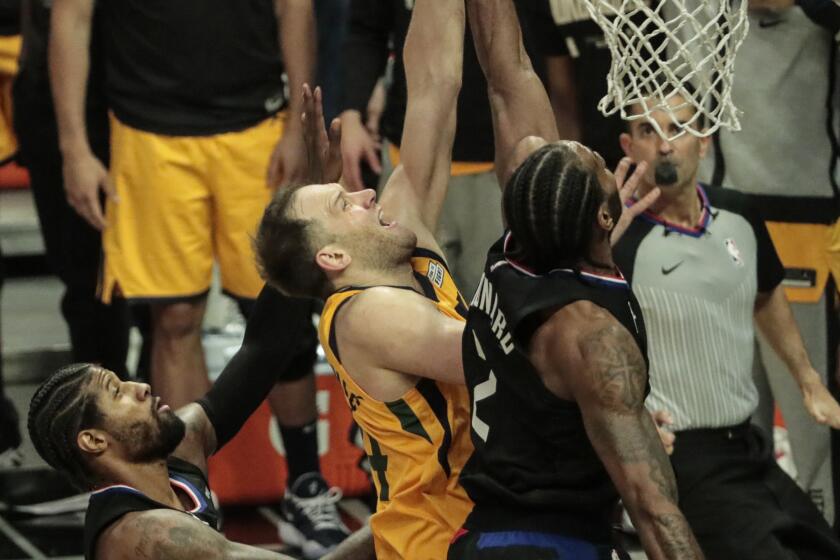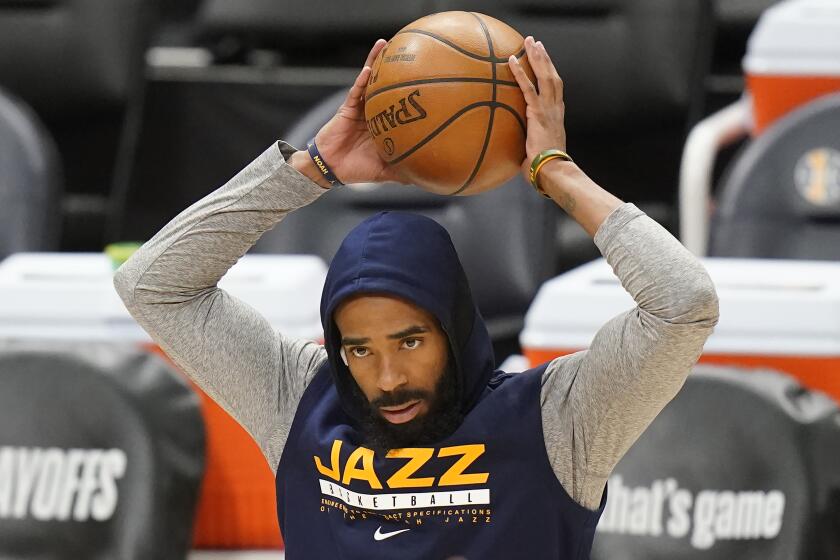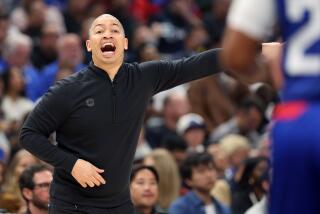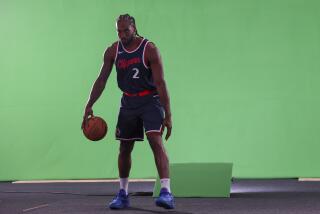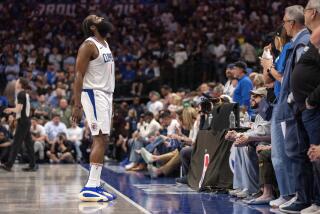Commentary: How good can Clippers be without Kawhi Leonard? Much of burden falls on ‘Playoff P’
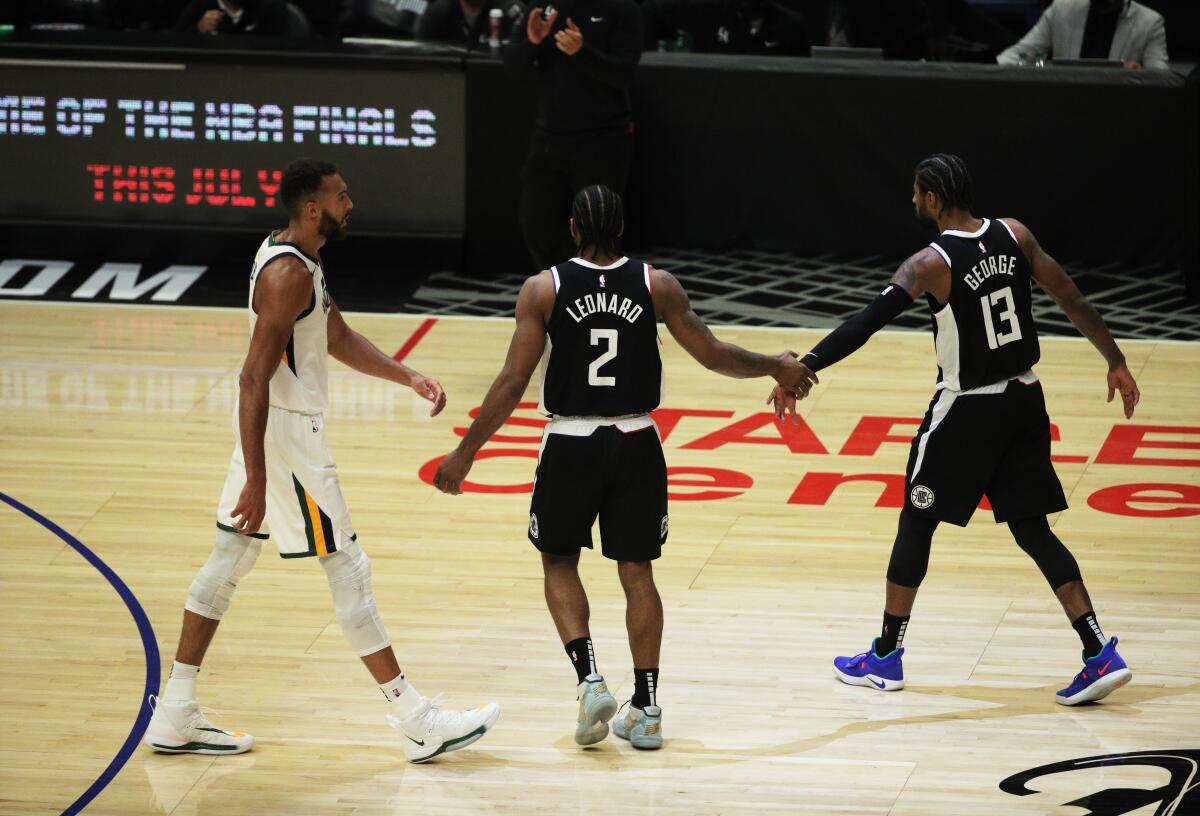
- Share via
When Kawhi Leonard was asked about his right knee Monday night following Game 4 of the Clippers’ second-round playoff series against Utah, he replied quickly, “I’m good.”
Because the answer was hard to hear through the videoconference’s feed, he was asked again.
“Yeah,” Leonard said. “Next question.”
Less than 48 hours later, with Game 5 of a deadlocked series looming Wednesday night in Salt Lake City, Leonard is not good. The forward, who has averaged more than 30 points, seven rebounds and four assists while shooting 57% in the postseason, is out for Game 5 because of a strained right knee suffered in the final five minutes of Game 4, when he was bumped by Utah’s Joe Ingles. There is no timetable for his return, according to a team statement.
There are nothing but questions now about how good his team can be in his absence.
The Clippers left Monday’s second consecutive double-digit victory with all the momentum in the series. Since 2017, they have lost their last seven games in Salt Lake City.
The Clippers, a franchise that never got its act together for a legitimate title run, appear on the verge of taking the next step to greatness.
This series schedule, with games played every other day, allows for little recovery time ahead of Game 6 and a possible seventh game back in Utah.
The Clippers were 12-9 without Leonard during the regular season, 6-5 when Leonard sat but costar Paul George played, and many of their season’s most memorable games came while shorthanded, featuring thrown-together lineups whose knack to win anyway displayed the roster’s depth and its apparent grit.
“We’ve been playing injured all year,” forward Marcus Morris said Monday. “The best thing about our team is our depth. We really have 11, 12, maybe 13 guys we can throw in there and guys are ready. That’s what we’ve been hanging our hat on is our depth all season is coming to help us when we really need it the most.”
Coach Tyronn Lue could insert Luke Kennard for more shooting, as in previous instances when Leonard has sat, or reserve wing Terance Mann for a long-armed defensive presence capable of scrambling to cover Utah’s myriad shooting options.
The Clippers retain much of that depth entering Game 5 — only center Serge Ibaka has been also ruled out because of back surgery — but the pressure of midseason nights in Miami and Detroit are not the same as the postseason. Will Lue, who rotated 11 players in Game 1 against Utah to spread out minutes after an exhausting seven-game series against Dallas, reach that far into his bench rotation again? Or will he double down on what was a nine-man rotation that is suddenly down an All-Star?
No matter how Lue manages the back of his roster, however, an extra burden undoubtedly falls on George, the other face of the team.
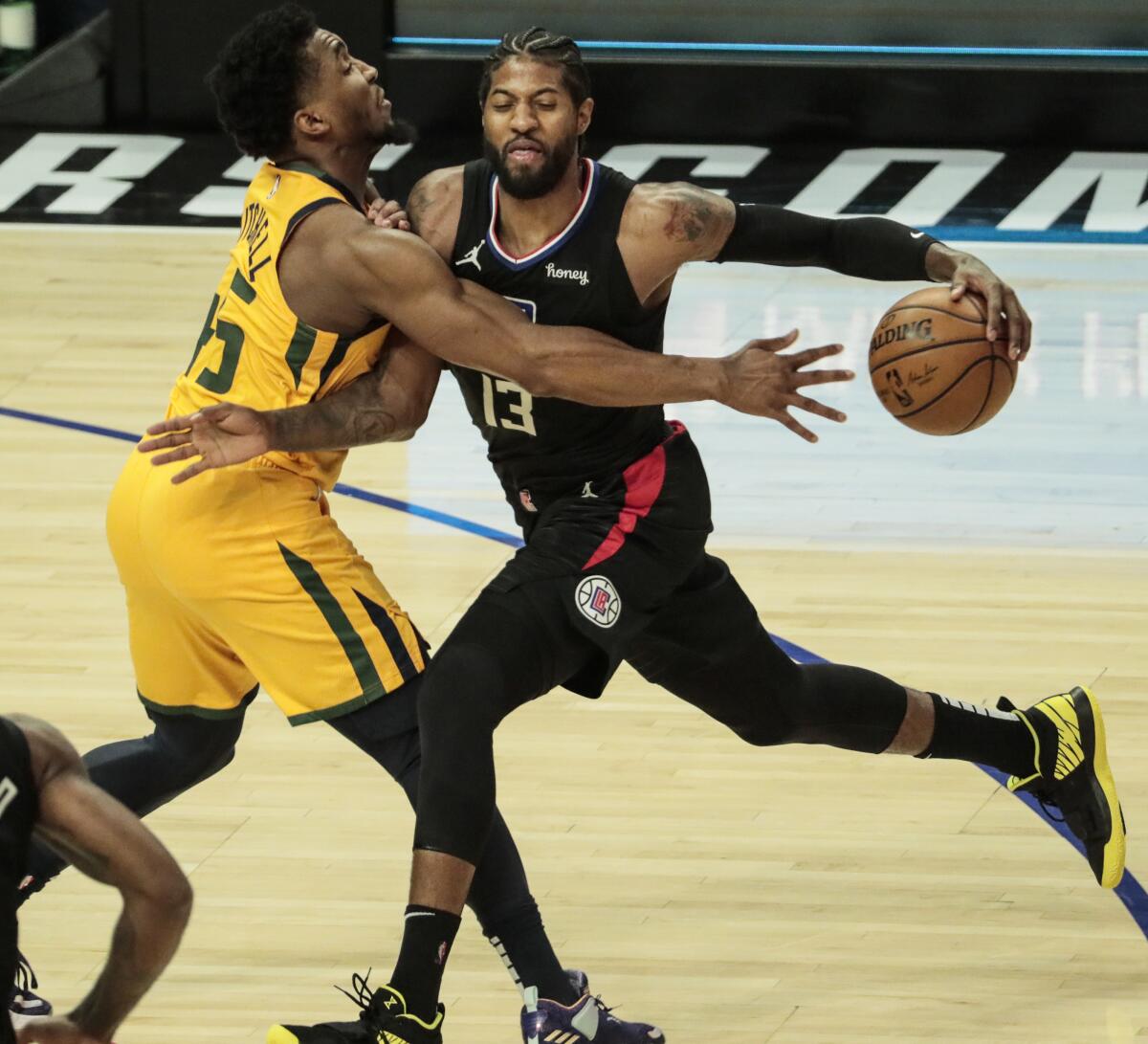
In Games 3 and 4, Leonard and George had flexed their might in ways rarely seen before during their two seasons in Los Angeles, producing back-to-back games of 30 points apiece while anchoring an oft-swarming defense that put Utah on its heels. Now George’s responsibility to score, make plays for others and defend has increased to a degree he hasn’t experienced in four years, when he played in Indiana, the last time he played without a teammate of his all-NBA caliber.
The Clippers have hardly collapsed when Leonard sits. During 81 minutes in this series with Leonard on the bench and George in the game, they have outscored Utah by 31 points, while shooting 46% and 41% from deep. Yet those are, on average, 7 minutes per game the Clippers have been tasked with surviving without Leonard, not a full 48.
For George, it is an undeniable opportunity to push back on criticism throughout his career that his effectiveness wanes in the postseason — and in an arena that serenaded him with chants of “overrated” and “Playoff P” throughout the first two games of this series. He has averaged 24.9 points, 8.6 rebounds and 5.2 assists, while making 50% of his two-pointers — the second-best postseason mark of his career — and 36% from three, in 11 playoff games.
The Clippers could face a different Utah Jazz team in Game 5 of their series as Mike Conley is making progress for his return from injury.
In the Clippers’ usual rotation, George typically plays the first eight minutes of each half before checking out to rest and returning with a lineup of mostly reserves to start the second and fourth quarters against Utah’s bench. Staggering his stars’ minutes has ensured Lue that at least one of his two-way forwards will be on the court at all times. Extending George’s minutes is one way to minimize how often the Clippers play without one of their leading scorers.
“T-Lue knows I will do whatever it takes,” George said after Game 4. “He trusts me out there in the situations and so he knows I’m going to do whatever it takes to win for our team and give our team the best chance.
“So that’s really the mindset. I don’t look at the minutes. If I could, I would love to play 48. But yeah, it’s just my mindset. I don’t care what the minutes is. I’m out there to try to win the ballgame.”
More to Read
Get our high school sports newsletter
Prep Rally is devoted to the SoCal high school sports experience, bringing you scores, stories and a behind-the-scenes look at what makes prep sports so popular.
You may occasionally receive promotional content from the Los Angeles Times.

